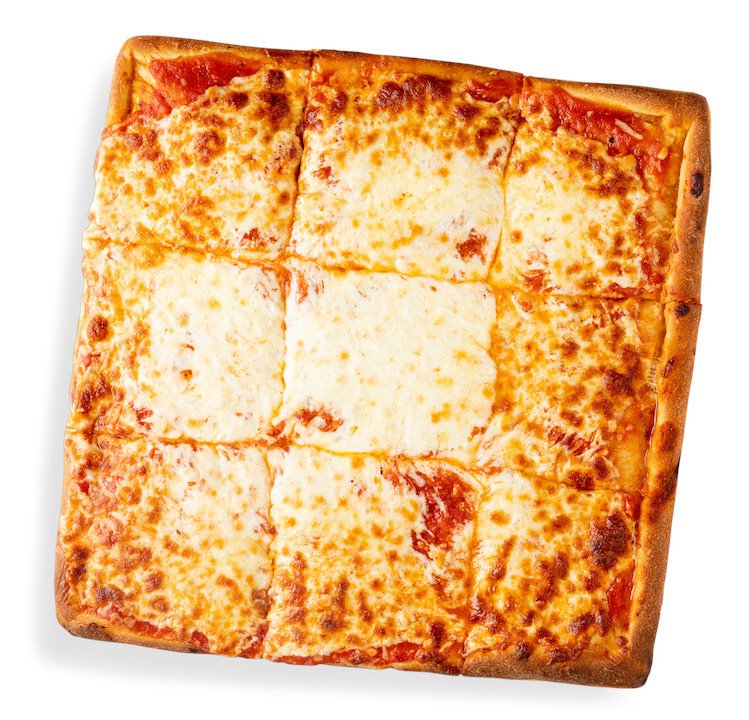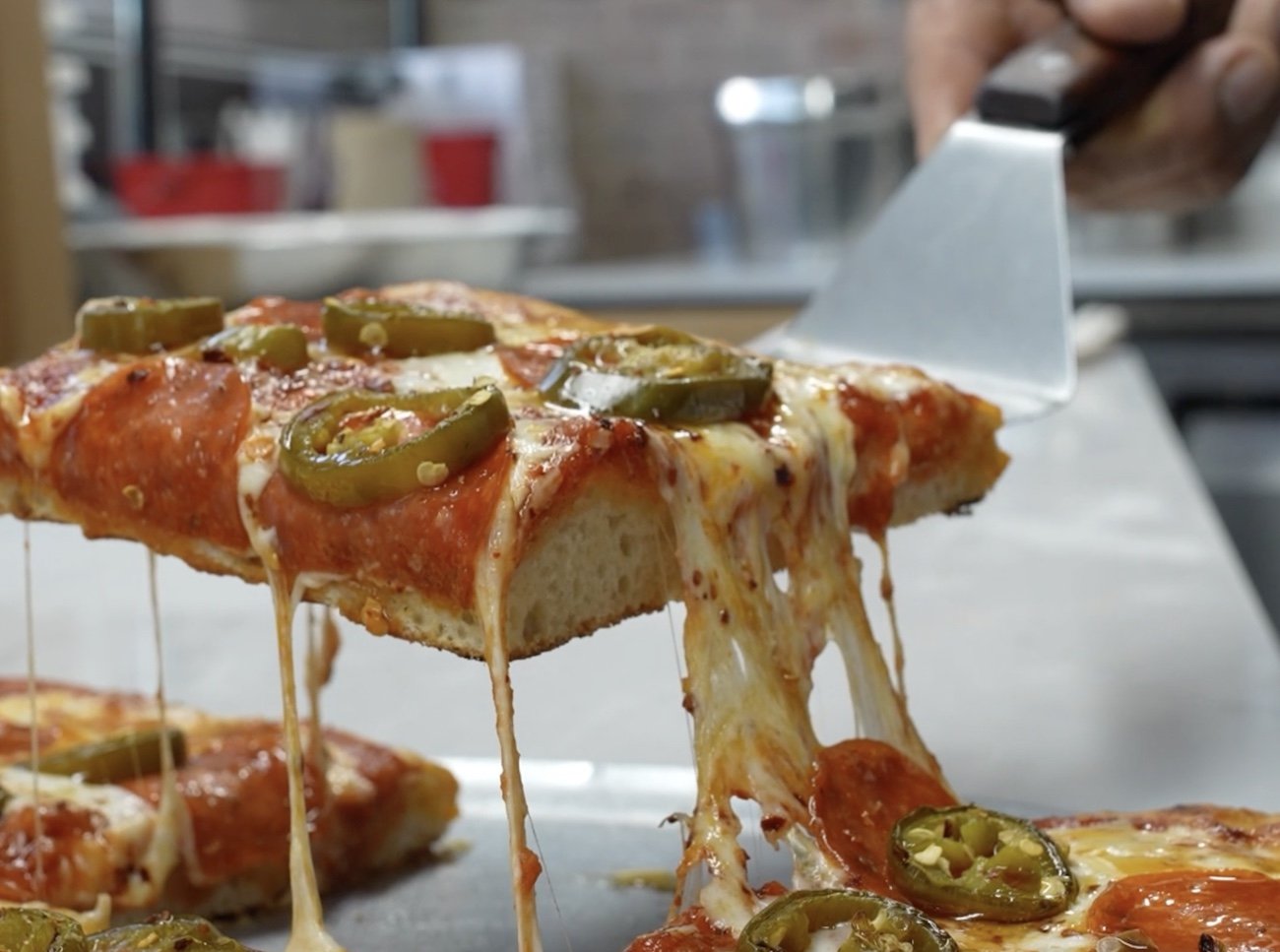We all know those delectable fluffy square pizzas that garnish many local pizzerias menus right now. This amazing treat has quite a history behind it and as with many things pizza, it may have originated in the Italian countryside but was perfected, to the iteration we all love and enjoy, in the streets of New York but the first generation of Italian immigrants in the early 20th century.
So, let’s dive deep (dish – sorry had to do it!) into what makes Sicilian pizza and all its versions so special!
Italian Sicilian Pizza
Made popular, in Palermo, in the mids-19th century Sicilian pizza is also known as sfincione (loose translation from Italian: thick sponge). This type of pizza along with its even older sister – the focaccia – were the only types of pizza consumed in Sicily until the 1860s.
Sfincione is traditionally made with a fluffy, spongy pan crust, very sparsely topped with a meatless tomato sauce, onions, breadcrumbs & local hard cheese made from goats or sheep milk and NOT mozzarella (made with cow or buffalo milk). Given the fact that Sicily is a large island that has a volcano (Etna) and a bunch of smaller mountains on it, there are not a lot of cows, or cow’s milk (and eventually… mozzarella) production on the island. You make do with what you got, right?
A vegetarian or rather meatless version of this treat is usually served on December 7 (which is the eve of the Feast of the Immaculate Conception), Christmas Eve, New Year's Eve, and Good Friday. It is also not very uncommon to find Sfincione in local bakeries, baked in the morning and then served throughout the day at room temperature, especially during the hottest months of the year.
American Sicilian Style Pizza
Sicilian-style pizza was introduced to the United States by Sicilian immigrants in the mid 20th century. Topping Sicilian pies with mozzarella most likely happened because most Italian bakeries and restaurants in New York City would have had access to good quality, low cost mozzarella. That was due to the boom of New York State's dairy cow industry in the late 1910’s.
A couple of decades after that, the popularity of all Italian food exploded in the U.S. with pizza being at the forefront. By the end of WWII, and with a bunch of returning soldiers praising the taste of it, pizza had taken over the U.S and all the variations that we know and love right now start popping up. New York (Thin Crust Pizza), Long Island (Grandma Pie), Chicago (Deep Dish Pie) & Detroit (Pan Pizza) all developed their own style of pizza based on traditional Italian ways and recipes but always drawing inspiration from whatever ingredients and techniques were locally available and popular. It wouldn’t take long before the term pizza began to include any type of crust topped with sauce and cheese.
The Anatomy of Sal’s Sicilian Style Pizza
Top Layer: Mix of shredded Mozzarella
Middle Layer: Pizza sauce with Italian herbs & parmesan
Bottom Layer: thick, fluffy & slightly spongy crust that is baked in a deep pan


